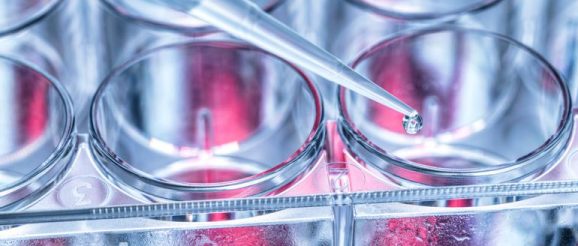Why biomanufacturing is the next innovation frontier for genomic therapies | PharmaVoice

Much has changed since the first version of the complete sequence of the human genome was released in 2000.
Over the subsequent 10 years, researchers began identifying genes underlying many rare disorders, eventually characterizing about 7,000 of these markers and opening drug development up to a new world of therapeutic targets. The new understanding also triggered a shift from small molecules and biologics to disease-modifying gene therapies.
It was during this time of bustling genomic promise that Jose-Carlos “JC” Gutiérrez-Ramos helped set up the rare disease unit at Pfizer as the company’s senior vice president and head of global biotherapeutics R&D. As Gutiérrez-Ramos explains, changes in the industry have since come swiftly.
“It’s a completely different scenario now — as a drug hunter, you’re not blind,” he explains. “You not only know where you’re going, but actually how to get there. It’s a fundamental transformation.”
Since leaving Pfizer in 2015, Gutiérrez-Ramos has served as a CEO in two emerging biotechs and worked as head of global drug discovery for AbbVie. Although he’s had a front row seat to changes in drug design, he’s also seen how the manufacturing factor of this equation hasn’t fully kept up with the pace of drug development. Today, Gutiérrez-Ramos is leveraging his extensive experience to help overcome some of the lingering manufacturing challenges as the chief science officer of Danaher Corp., a global science and technology conglomerate.
According to Gutiérrez-Ramos, biomanufacturing is the next frontier in innovation for genomic medicines.
“Companies like us are considering: ‘How do we take all of our engineering, biology, automation, physics, expertise, etc., and make this process more efficient?’” he says. “There is a big push needed to get these therapies to have a positive impact on the world.”
Here Gutiérrez-Ramos discusses some hurdles biomanufacturers are looking to overcome to make cell and gene therapy manufacturing more efficient.
This interview has been edited for style, length and clarity.
PharmaVoice: What are some of the biggest challenges to manufacturing genomic medicines right now?
Jose-Carlos Gutiérrez-Ramos: First, to ease manufacturing, there has to be a standardization of the genomic payload. Meaning, how do you design your genes, or the modifications of your genes? At the moment, there is no learning from program to program. It can feel like chaos; different people do it different ways. There is no central database. Artificial intelligence (AI) helps, but could do much more.
Is there an organization that should be creating standards around genomic payloads?
I think it’s going to be difficult to standardize by organization, so we have to standardize information access.
I think a lot of this will have to come from software packages that allow the design of genomic payloads, comparison learning and implications for manufacturing scale. Because these sequences have to be incorporated in the next step of the chain, and that’s going to result in productivity of the cell lines.
What about the challenges associated with delivery systems?
Of course, once you have the genomic payload, then you have to get the treatment into cells. And currently, the ways of getting these genomic payloads into cells are not optimal. How we produce these delivery systems — like lipid nanoparticles, or LNPs — is not efficient … and it’s one of the biggest challenges the field of genomic medicines is facing.
We are currently working with our companies on optimizing LNP technologies … focusing specifically on the amount of genomic payload getting into the nucleus of the cell. Basically, what you want to do with genomic medicines is modify particular cells in the body. But if the drug only gets into 30% of the cells you are targeting, your therapy is not great. So, you want to make sure that you transduce as many cells as possible for your target.
If you were to pinpoint specific areas that could improve the efficiency of these delivery systems, what would they be?
One is what we call the efficiency of transfection, meaning how many cells get transduced by this virus or that LNP. And what are the mechanisms that allow this virus or that LNP to enter that cell? Are there specific receptors on those cells or on the viruses that actually get it through? Does the virus release the genomic payload or the lipid nanoparticle via the payload more efficiently?
There are a number of mechanisms that relate to the biology of that process: How many get to the surface of the cell? How many cross the surface of the cell? How many get to the nucleus, or how many get expressed? And a lot of these characteristics depend on how you have designed your genomic payload in the first place.
What are some of the tangible manufacturing goals you’re focused on right now?
Overall, our goal is to cut the time that it takes to generate any of these medicines in half, which will result in cost reductions.
We are not a pharma company, but we are enabling biomanufacturing companies with technologies, and working with our partners to make sure that from the sequence to the vial, we have technologies every step of the way that help cut the time.
How would you compare the work that you’re doing now to the earlier development work you were doing at other companies?
I do think I’m having a bigger impact in this role because of the scale of Danaher. If you know the 7,000 genes, if you know their polymorphic variants, if you know that you can either generate that mRNA, or a gene editing therapy or whatever therapy for this specific disease … then suddenly, the center of gravity of the problem becomes: Can you make the medicine? Or can you make it potent enough? For enough people? And can you scale down to make sure that your vial and my vial are not different?
I think the impact that we are having at the moment is enormous.
